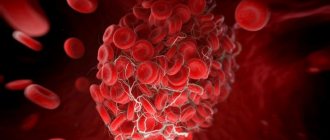Other names and classification
International nonproprietary name
Chorionic gonadotropin.
Gonadotropin 5000 is a medicine whose main action is aimed at eliminating problems with sexual function.
Trade names
Identical to the previous one.
Registration number
LS-002615.
pharmachologic effect
The effect of the drug can be described as gonadotropic, mainly a luteinizing effect. It stimulates the production of the sex hormone (testosterone) in the testicles (can be used in boys) and ovaries (used in the treatment of girls). It has a beneficial effect on the process of ovulation and spermatogenesis.
The drug has a beneficial effect on the development of the organs of the reproductive system.
The drug has a beneficial effect on the development of the reproductive system and stimulates the synthesis of estrogen.
Indications for use of Gonadotropin 5000 units
The use of an injection solution will be justified when there is a need to treat problems with the development of the genital organs in men or women, such as:
- pituitary dwarfism, hypogenitalism, cryptorchidism, sexual underdevelopment in men;
- insufficiency of spermatogenesis;
- problems with carrying a pregnancy, threat of spontaneous miscarriage, infertility associated with lack of ovulation, dysfunction of the corpus luteum (with full production of estrogen);
- insufficiency of the gonads caused by dysfunction of the hypothalamus and pituitary gland.
It is also advisable to use the medicine to start the process of superovulation during the use of artificial reproductive technologies.
Chorionic gonadotropin: general information
HCG or human chorionic gonadotropin has two subunits in its structure: alpha and beta. The alpha subunit is identical in structure to the TSH, FSH, and LH subunits. The beta subunit has no analogues. It is the basis for tests that determine pregnancy.
The production of the beta component of hCG occurs in the first weeks of pregnancy. And by the 11th week its content increases thousands of times. After this, its level begins to gradually fall. For this reason, it is important to monitor human chorionic gonadotropin during the perinatal period. Thus, monitoring the level of the hormone allows you to timely determine its decrease or increase, which may indicate the development of certain pregnancy pathologies (threat of miscarriage, ectopic pregnancy, etc.).
In addition, a woman registered for infertility must undergo testing to detect antibodies to hCG. These antibodies do not allow the protein to fully function, which leads to a decrease in placental lacogen, estradiol, and progesterone. Due to human chorionic gonadotropin, embryo rejection and its death inside the mother's womb are excluded. This is another argument in favor of monitoring its level. Patients who have antibodies to hCG in their blood are recommended to undergo plasmapheresis and take advantage of the possibilities of in vitro fertilization.
Usually, human chorionic gonadotropin levels are monitored during pregnancy, which is normal in such a situation. However, a beta-hCG test may in some cases be indicated for some non-pregnant women and even men. A test that detects human chorionic gonadotropin in the blood is prescribed to men and non-pregnant women when it is necessary to confirm hormone-producing tumors.
For injections, human chorionic gonadotropin is produced in the form of a solution or in the form of a lyophilisate (a solution is prepared from it). This protein is extracted for the production of hormonal drugs from the urine of pregnant women.
Method of administration and dosage of Gonadotropin 5000 units
How to breed
The drug comes with instructions on how to dilute it for safe use. You should draw the solvent into a syringe and inject it into the powder along the wall.
How to prick
Different treatment goals lead to different dosages being prescribed. The course of treatment is also determined on an individual basis. Administration is carried out intramuscularly.
The threat of miscarriage requires the administration of 10,000 units on the first day of treatment, after which 5,000 units are used twice a week. More often, the doctor chooses a period of 8 weeks to begin therapy, which should be continued until the 14th week of gestation.
To stimulate ovulation, you need to use 5000-10000 units at a time; to induce full function of the corpus luteum, you should use 1500-5000 units for 3-6 days after ovulation has occurred.
Administration is carried out intramuscularly.
To trigger superovulation, a dosage of 10,000 units should be prescribed after the follicles have matured (for this, follicular growth is first stimulated). The eggs are collected (puncture) 34-36 hours after the drug is administered intramuscularly.
For the treatment of hypogonadotropic hypogonadism, it is necessary to prescribe 1500-6000 units once a week.
If the goal of therapy is to eliminate delayed reproductive development in boys, 3000-5000 units should be prescribed once a week for 3 months. Sometimes a combination with GnRH becomes necessary.
The above cases, as well as other pathologies, should be discussed with a doctor so as not to harm your own body.
How to get tested
HCG analysis during pregnancy by day should be taken in the morning on an empty stomach. Blood is taken from a vein. The hCG level, the weekly norms of which determine the exact duration of pregnancy, reveals developmental abnormalities in the first trimester. It can be taken on the 5th day of delay.
If the test results show deviations from the norm (lower or higher hCG in the weeks from conception), then you need to re-visit the laboratory after 3-4 days. The attending physician must decipher the indicators: he explains to the patient the main reasons for the deviations. The hormone is also detected in urine and amniotic fluid.
Venous blood sampling is considered the most informative way to determine hCG by obstetric week. A pregnant woman should carefully prepare for the procedure to eliminate the possibility of false results. The indicators can be affected by:
- instrumental diagnostics performed on the eve of the analysis (radiography, ultrasound);
- nervous tension or stress;
- physical fatigue;
- physiotherapeutic procedures (barotherapy);
- long-term use of medications;
- eating the wrong foods.
The woman is instructed to agree in advance with the attending physician on the discontinuation of drug therapy. Before taking blood, it is important to maintain psycho-emotional balance. If it is necessary to submit biomaterial again, experts recommend adhering to the same conditions (food, visiting the same laboratory).
Fence algorithm:
- the medical worker prepares the necessary instruments in advance, marks the container and makes an appropriate entry in the registration journal;
- the woman is seated on a soft chair, asked to straighten her arm at the elbow, and an oilcloth roller is placed under the joint;
- apply a rubber or cloth tourniquet above the elbow bend, check the pulse on the wrist;
- The injection site is wiped with an alcohol wipe;
- ask the woman to clench and unclench her fist for a few seconds;
- carefully insert the needle into the vein, remove the tourniquet and collect the biomaterial.
After the medical professional has removed the needle, apply cotton wool soaked in alcohol to the injection site and ask the patient to bend her arm at the elbow. You don’t have to wait long for the analysis results; most often they are ready within 24-48 hours. To minimize the risk of hematoma formation, it is necessary to wait until a clot forms at the puncture site.
special instructions
The effectiveness of the drug in men is minimized if there is an increase in the concentration of FSH. Long-term treatment and use in large doses in boys with pathologies of reproductive and external development can provoke early puberty.
You should not prescribe medication for long-term use for cryptorchidism. This is especially true in cases where surgical intervention is planned. This is due to the fact that degeneration of the gonads is possible.
Too long treatment can provoke the formation of antibodies to the drug in the body. When using hCG, the risk of multiple pregnancy increases.
Side effects may include headache.
False test results are possible during therapy and for 7 days after its completion.
What is the normal hCG level at 3 weeks of pregnancy?
HCG begins to be produced 2-3 weeks after conception, when the fertilized egg is implanted in its place in the woman’s uterus. The body of the expectant mother perceives the developing embryo as a foreign body, since half of the genetic data contained in it is inherited from the father and is not native to the female body. To neutralize this process and allow the fetus to develop normally in the future, the hCG hormone is needed. This hormone also promotes the growth and development of the placenta, which protects the fetus from negative influences.
Before the start of week 3, the level of this element is low, so it is quite difficult to determine it. Starting from the 3rd week, the hCG content increases and normally amounts to just over 750 mU per 1 ml of blood, and this is enough to detect it using laboratory tests and confirm the presence of pregnancy. Over time, this indicator increases, the level of the hormone increases by 2 times every 2-3 days.
HCG during pregnancy: what is the norm by week?
In the first few days after conception, hCG already begins to be produced in the woman’s body, but the level of this hormone is still too low (16-150 mU). At week 2, the normal levels are already more than 200 mU.
Starting from the 3rd week of pregnancy, the level of hCG in the body of the expectant mother is already high enough for this element to be detected using laboratory tests or even test strips for home use. And until the 13th week, these indicators are actively increasing. This situation is considered normal, because during this period the placenta is formed, and this process requires this hormone.
The hCG content at week 4 is 2500-82000 mU, by the end of week 5 - 150,000 mU, and after another 4 weeks this figure increases to 300,000 mU. It is during this period that the most active development of the placenta and the fetus itself occurs.
From the 13th to the 22nd week, the content of the hCG hormone drops slightly, but this is not a cause for concern, this situation is considered normal. But in the second half of pregnancy, the level of the element begins to increase again, and this happens until the very beginning of labor. Although the rate of increase in hCG levels is no longer as active as at the very beginning of pregnancy. By the time of childbirth, a woman’s normal level of pregnancy protein hormone is about 78,000 mU.
Possible reasons for deviation from the norm
Increased levels of the hormone are observed when:
- incorrect determination of the timing of pregnancy;
- multiple pregnancy;
- development of gestosis, early toxicosis in the expectant mother;
- genetic abnormalities in the development of the embryo (Down syndrome, serious anomalies in the formation of internal organs);
- presence of diabetes mellitus in a pregnant woman;
- long-term use of synthetic medications by a woman.
Downward deviations in hCG levels are possible when:
- diseases of the woman’s reproductive system (for example, if before pregnancy she had significant menstrual irregularities);
- threat of miscarriage (in this case, there is a significant decrease in hormone levels, more than half the normal levels);
- frozen pregnancy, when the development of the fetus stops for one reason or another, as a result of which the female body stops producing the corresponding hormone;
- ectopic pregnancy, in which the fertilized egg cannot implant in the uterine cavity and develops outside of it;
- insufficient development of the placenta;
- delays in embryo development;
- post-term pregnancy (birth does not occur after 40 obstetric weeks);
- intrauterine fetal death in the early stages after gestation (in the 1st trimester of pregnancy).
The normal levels of hCG levels fluctuate within significant limits; the specific level depends on the individual characteristics of the expectant mother’s body. But, if there are significant deviations and this situation is observed over a long period of time, this indicates serious problems during pregnancy. Therefore, it is recommended to monitor the hormone level throughout pregnancy.
Expert author: Ekaterina Nikolaevna Merezhko,
presenter of courses for pregnant women preparing for childbirth
Side effects of Gonadotropin 5000
Side effects may include headache, anxiety and irritation, depression, allergic symptoms and local manifestations such as hyperemia and pain at the injection site, skin disorders in the form of acne. Possible inhibition of the gonadotropic function of the pituitary gland.
Men may experience gynecomastia, an increase in the size of the testicles in the groin (with cryptorchidism), increased sensitivity of the nipples, an enlarged penis, swelling, fluid retention and a decrease in the concentration of sperm in the seminal fluid.
An unfavorable consequence of taking the drug is ovarian hyperstimulation syndrome (OHSS) when carrying out combined treatment of infertility (together with clomiphene and menotropins).
Contraindications
You should not treat with this medication if you have health problems such as:
- hyperprolactinemia;
- adrenal insufficiency;
- ovarian and breast cancer;
- increased susceptibility to the active substance;
- obstruction of the fallopian tubes;
- early menopause;
- thrombophlebitis;
- congenital or postoperative absence of the gonads;
- hormonally active tumors that arise on the gonads;
- neoplasms of the pituitary gland;
- prostatitis.
It is necessary to prescribe the medicine with caution for bronchial asthma, coronary heart disease, migraine, arterial hypertension and chronic renal failure.
Reasons for deviations
The hCG level should increase regularly in the days following conception. If no growth is observed, the woman should immediately consult her doctor. Deviations are often observed during ectopic pregnancy. This is a life-threatening condition in which the fertilized egg becomes implanted inside the fallopian tube or ovary. If surgical intervention is not performed in a timely manner, the risk of internal bleeding increases.
There are a number of features that determine ectopic pregnancy using a blood test. The growth is slow, the values do not correspond to the norm. The gynecologist regularly monitors the values, trying not to miss the moment when the woman needs to schedule an ultrasound (using a special sensor).
Increased level
Elevated hCG values are possible during multiple pregnancies. Implantation of several embryos at once is accompanied by rapid production of the hormone (directly proportional to the number of children in the womb). The woman is instructed to undergo tests several times to confirm a multiple pregnancy. Other reasons for increased readings:
- long-term use of hormonal drugs;
- development of chromosomal abnormalities in the fetus in the early stages of pregnancy;
- intrauterine malformations;
- gestational trophoblastic disease (hydatidiform mole, placental bed tumor or epithelioid tumor);
- gestational diabetes mellitus;
- toxicosis (late or early).
If the gynecologist incorrectly determined the period from the very beginning, then high values are not considered pathological. They can act as markers of developmental abnormalities. If a child has genetic abnormalities, the hCG in the mother’s blood will be doubled (when compared with normal values). High risk:
- abnormal development of the fetal neural tube;
- pathologies of the heart and blood vessels;
- Turner syndrome;
- Patau syndrome;
- Edwards syndrome;
- Down syndrome.
The first screening makes it possible to detect pathology of fetal development with almost 70% probability. After the gynecologist has assessed all the risks, he engages a geneticist who will help select a comprehensive drug treatment. If the pregnancy is multiple, then the woman is monitored by several specialists at the same time.
High rates are observed during a false-positive pregnancy, when the woman’s body begins to produce the hormone with a vengeance. Predisposing factors:
- hormonal therapy, which allows you to pharmacologically replace the functions of the ovaries;
- benign or malignant tumors in the kidneys, lungs and genitals;
- hydatidiform mole.
It is impossible to normalize the indicators with medication. If the increase was caused by multiple pregnancy or late toxicosis, then the woman has no reason to worry. If abnormalities in fetal development are detected, the gynecologist is obliged to notify both parents and explain to them the possible consequences. To minimize the risk of an erroneous diagnosis, it is necessary to take the test several times in different laboratories. In this case, consultation with a geneticist is mandatory.
Interoperability and Compatibility
When treating the inability to get pregnant, it is suggested to combine this drug with menopausal gonadotropin.
With alcohol
It is recommended to abstain from alcohol during the treatment period.
Exceeding the dose recommended by the doctor may cause the development of ascites.








